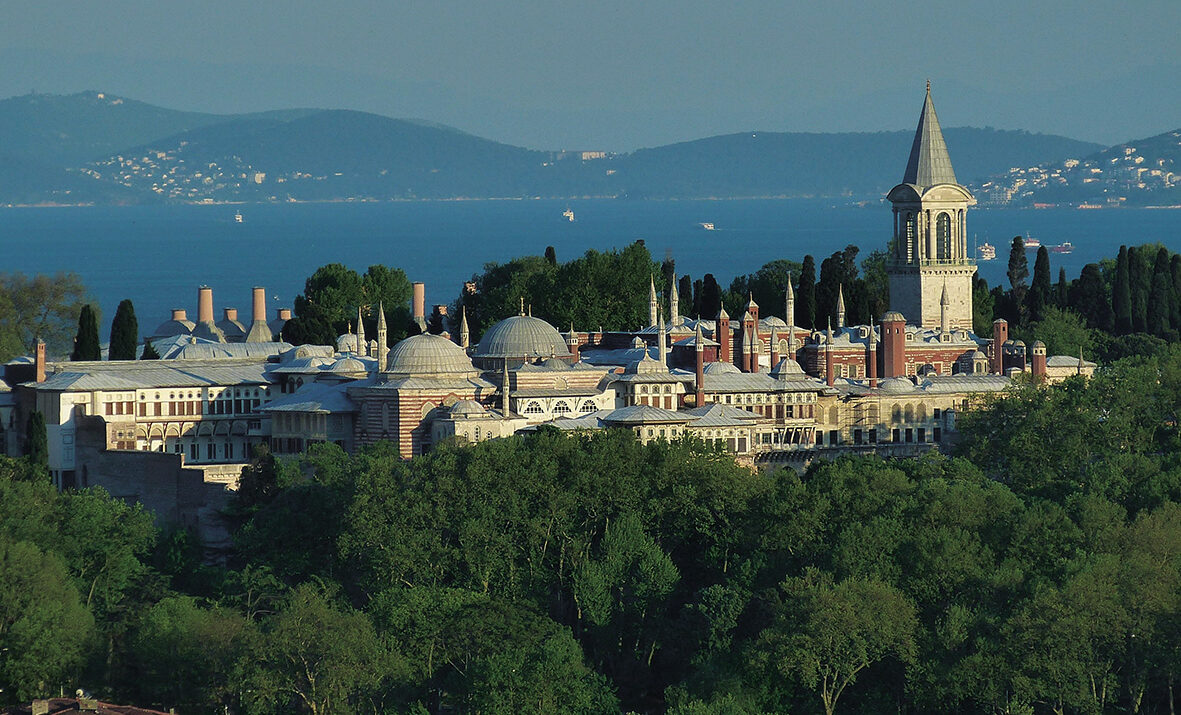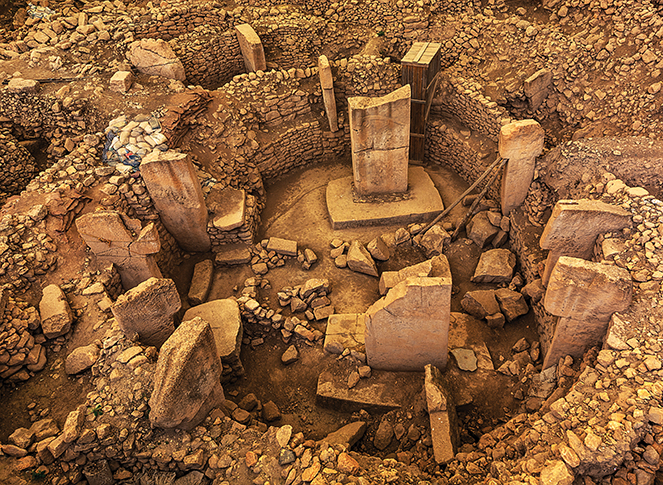Located in Istanbul’s Historical Peninsula, Topkapı Palace served as both the administrative center of the Ottoman Empire and the residence of the sultans for four centuries. Construction of the palace began in the second half of the 15th century by the order of Sultan Mehmed the Conqueror, and it became one of the most important structures reflecting the state’s administrative organization, power, and artistic vision. Today, open to visitors as a museum, the palace continues to convey the grandeur of the empire through its architecture as well as its collection of sacred relics and historical artifacts.
Topkapı Palace, located in Istanbul’s Historical Peninsula with a commanding view of the Sea of Marmara, the Golden Horn, and the Bosphorus, is one of the most important structures reflecting the grandeur of the Ottoman Empire. Construction of the palace began in 1460 by the order of Sultan Mehmed the Conqueror, shortly after the conquest of Istanbul in 1453, and was completed in 1478. The palace took its present form through additional structures commissioned by the sultans who succeeded Mehmed the Conqueror.
Construction began at Sarayburnu, known as the Olive Grove, with garden layouts and pavilions and continued with the city walls. The palace remained a center of life and administration until the mid-19th century. By the 1840s, the existing palace was no longer sufficient to meet the 19th-century state protocol requirements, leading to the construction of Dolmabahçe Palace between 1843 and 1856. Shortly afterward, the center of life and administration for the dynasty was completely moved to Dolmabahçe Palace. Topkapı Palace hosted a total of 25 Ottoman sultans, from Mehmed the Conqueror to Sultan Abdülmecid.
It served the sultans for 400 years
One of Istanbul’s iconic structures, Topkapı Palace, was built on a 700,000-square-meter area atop the Eastern Roman acropolis at Sarayburnu. For approximately 400 years, until the 31st Ottoman sultan, Sultan Abdülmecid, Topkapı Palace served as the administrative, educational, and artistic center of the empire and as the residence of the sultans. Its location gave the palace both strategic and symbolic significance. Following the conquest, the palace was constructed in the new Ottoman capital under the supervision of Mimar Atik Sinan, known as the chief architect of the period.
Each courtyard of the palace represents the hierarchy of the state administration
The architecture of Topkapı Palace stands as the most prominent example of Ottoman palace design. Built with a plan that favors elegance over ostentation, the structure, although constructed atop Byzantine remnants, fully embodies Ottoman aesthetics. Each courtyard of the palace represents the hierarchy of the state administration. As one moves from the outer to the inner courtyards, the spaces become more private and sacred. The first courtyard contains areas open to the public, while the second courtyard houses the Imperial Council (Divan-ı Hümayun) and the entrance to the harem where state affairs are conducted. The third courtyard, Enderun, contains the sultan’s private apartments, and the fourth courtyard, surrounded by pavilions, terraces, and gardens, is the sultan’s area of leisure.
Following the establishment of the Republic of Türkiye, Topkapı Palace was converted into a museum on April 3, 1924, making it the first museum of the Republic. Today, covering an area of approximately 350,000 square meters excluding Gülhane Park, Topkapı Palace stands as one of the world’s largest museum-palaces, with its buildings, architecture, collections, and around 300,000 archival documents.
The layout of the palace, defined by large courtyards surrounded by arcades and service buildings, was influenced by the Edirne Palace. Traditional materials such as cut stone, brick, and wood were used in its construction. The domes are covered with lead, and marble cladding was preferred for the interior spaces. Decorative elements prominently feature İznik and Kütahya tiles, mother-of-pearl inlay woodwork, gilded ceilings, and examples of calligraphy.
Outstanding examples of early Ottoman landscape design
The palace serves as a center where almost every branch of Ottoman art is applied. Arts such as tilework, illumination, miniature painting, calligraphy, woodwork, and metalwork can be seen in different parts of the palace. Mother-of-pearl inlay and carving techniques stand out on door panels, cabinets, and lattices, while examples of calligraphy appear on door lintels and dome bands. In addition, the gardens surrounding the palace are considered among the finest examples of early Ottoman landscape design.
One of the most comprehensive historical structures
Topkapı Palace is not just an administrative building; it is a symbol of Ottoman aesthetics, artistic vision, and state tradition. Today functioning as a museum, the palace remains one of the most comprehensive historical structures reflecting the political, cultural, and artistic heritage of the Ottoman Empire. Topkapı Palace was also included in the UNESCO World Heritage List in 1985, as part of the “Historic Areas of Istanbul.”




